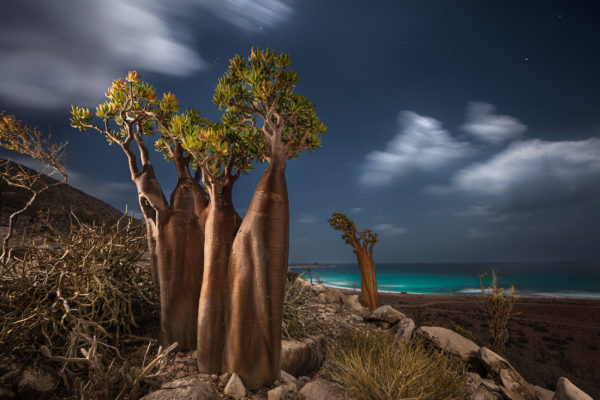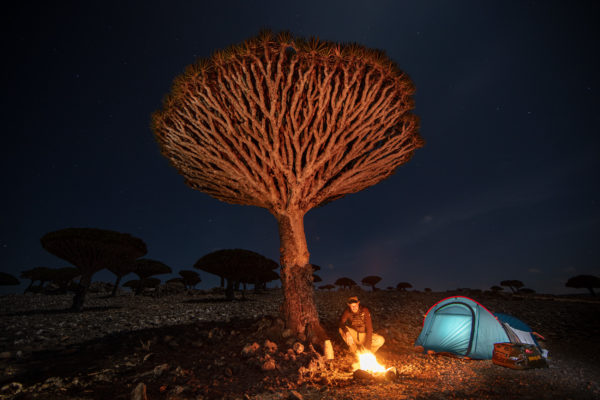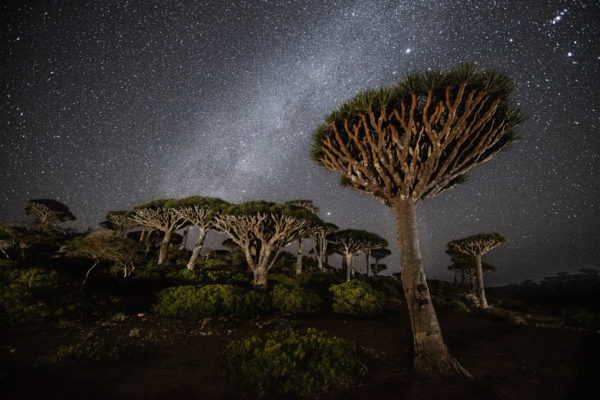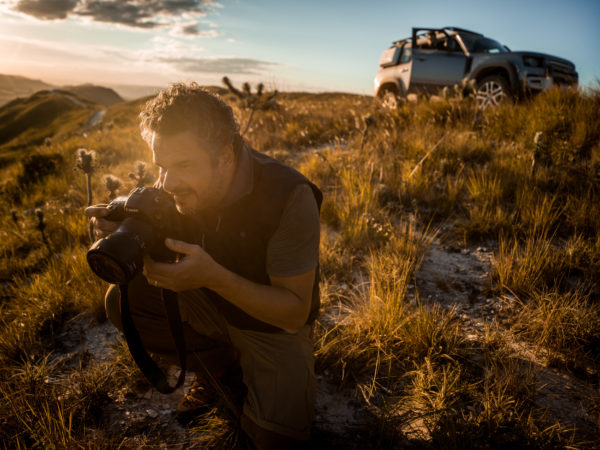São Paulo – A trip without a hotel, restaurant or internet. A week away from things seen as ‘civilization.’ An untouched millenary island with paradisiacal beaches and mountains lined with strange and fascinating trees that can’t be found anywhere else. People who live away from globalization, in villages and caves, most of whom are fishers.
This is Socotra Island, off the coast of Yemen. Coveted by many travelers for its landscapes and especially the dragon blood trees, small groups of Brazilians can now visit the place.

Photographer from Minas Gerais Cristiano Xavier had been trying to get to Socotra since 2017 to photograph the dragon blood trees and include them in his book, ‘Treelogia’ [‘Treelogy,’ in free translation], with pictures of trees from six continents. “I spent twenty years photographing trees all over the world, and going to Socotra was a dream because the dragon blood trees only exist there,” said Xavier to ANBA.
Six years ago, the civil war on the Yemeni mainland, which sprung up in 2014, was still very intense, and there were barely any flights to Socotra. “There was only one flight through Cairo, [Egypt], which passed through the Yemeni capital [Sanaa], then arrived in Socotra. It is not safe even today, let alone at that time [to pass through mainland Yemen],” said Xavier.
Only in November 2021 came up a nonstop charter flight from Abu Dhabi, the capital city of the United Arab Emirates, to the capital of Socotra [Hadibo], carrying humanitarian aid and military apparatus. “Part of the flight was open for sale to anyone who wanted to get to know the island; I needed an agency in Yemen, some contact there to buy that ticket. I was able to get on that list,” he said.

The photographer, who has been working on expeditions to remote destinations since 2010, managed to make his dream come true and landed in Socotra for the first time in February 2022, when he went alone to see the place and take pictures. “First, I go to the place, set up the itinerary, then take a group of photographers or people who like photography; they don’t need to have professional equipment; many people who traveled with me only had a smartphone,” he informed.
The first group the photographer from Belo Horizonte took to the Yemeni island was in February this year, with 12 people. He already has plans to take a second group in November. “There is no hotel, no type of tourist structure, we camped for seven days, and a local guide conducted us and provided us with the structure, food, and camping. I was the first Brazilian to carry out expeditions there,” he emphasized.
With the group, Xavier spent a few days on a pristine “Maldives-like” beach, as he described it, and after bathing in natural pools that collect rainwater, he went up to the mountains, where the forest and dragon blood trees are.
The island has about 37% of endemic vegetation, that is, that only exists there. “There are not only the dragon blood trees, which are beautiful, but also other trees only found there, very exquisite,” said Xavier.
In his book, he shot the trees both during the day and night. “[On the first trip to the island,] I would research during the day, mark the locations and come back at night to take the pictures. Now, I’m more teaching and guiding [the group].

All of Socotra’s attractions are about nature, beaches, and forests. “It’s a profound experience, no internet, no hotel; it’s a week of camping in nature, without distractions. The immersion in the place is much more intense. You experience that with a much greater depth,” reported the photographer.
From 2022 until now, there have been changes on the island. Today, there is a container hotel in the capital, Hadibo, close to the airport. “The UAE practically annexed the island; they are the ones who put money in, give boats to fishermen, and build mosques, gas stations, and hospitals.
But the buildings on the island are primarily rudimentary stone houses. Outside the capital, there are villages made of stone and caves. The natives live from fishing, are excellent anglers, and know the sea like nobody else. Some keep goats or cows, and the islanders are generally very impoverished. Because they are practically isolated from the rest of the world, their culture was little influenced by civilization, according to Xavier.
Cristiano Xavier is looking for sponsors to publish his book ‘Treelogia’ and hold a photo exhibition.
Dragon blood trees
The dragon blood trees take that name due to their red sap. The natives scrape the trunk of the trees with a stone to remove the sap, wait for it to dry, and make a red powder from it is used as makeup in religious ceremonies. The photographer said it is also used to help stop bleeding in postpartum hemorrhage.

Socotra was declared a UNESCO World Heritage Site and drew global attention. This helped preserve the trees, educate the natives not to cut the vegetation anymore, and now they plant seedlings that are little by little reintroduced into nature, Xavier said.
Dragon blood trees can reach 8 to 10 meters tall; the biggest can be 700, 800, or even 1,000 years old. “Access is very restricted; the trees are on top of the mountains, in cliff-laden forests. They only grow from a certain altitude upwards; they are mainly at the top of the mountains because they collect water from the fog, not from the ground. There is a tuft of leaves between the branches at the very top, and when the mist comes, it channels the droplets through the branches. The wood is spongy inside, so the branches retain water,” explained Xavier.
A tree seedling takes about eight years to reach ten centimeters in height. “You will not see one grow up in your lifetime,” said the photographer.
Socotra is the largest of the four islands forming the Socotra archipelago in the Indian Ocean, off the coast of the Horn of Africa, in the Gulf of Aden, at the mouth of the Red Sea.
Men and women can participate in the photographic expedition. “Women can go, tourists can do everything, for outsiders, the laws are not strict, you just need to cover your legs and shoulders when you go to the village or city. You can enter the sea in a bikini; you don’t need to cover your head. It’s safe for everyone,” said Xavier.

Cristiano Xavier started photographing in 1998 and, since then, has had a passion for trees. In 2012, he set up a photographic expeditions company and has already made over 80 trips with groups to destinations such as Iran, Norway, Namibia, Patagonia (Argentina/Chile), Indonesia, Bhutan, Nepal, Mongolia, and Tanzania. In Brazil, Xavier’s expeditions are bound to Lençóis Maranhenses in the Northeastern state of Maranhão. He visited about 57 countries.
“I’m always searching for more primitive places, which few people have ever been to; the fewer tourists, the better. I try isolating myself for a few days to escape this mess,” he said.
His next expedition will be Al-Ula in Saudi Arabia. He intends to form a group to travel in February next year. “The historic sites are wonderful, like Petra [Jordan], but it is more exclusive, with fewer people, and more preserved,” he said.
Information about Cristiano Xavier’s photographic expeditions can be found on the photographer’s website.
Translated by Elúsio Brasileiro




